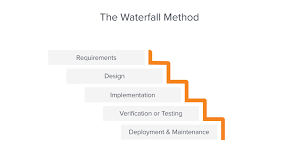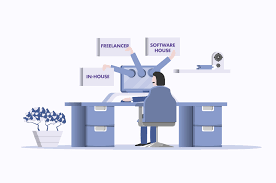Exploring the Role of an Oracle Software Engineer in Modern IT Environments
The Role of an Oracle Software Engineer
Oracle software engineers play a crucial role in developing and maintaining software applications that utilize Oracle technologies. These professionals are responsible for designing, implementing, and testing software solutions that meet the specific needs of their clients or organizations.
Key Responsibilities:
- Designing: Oracle software engineers work closely with stakeholders to understand requirements and design software solutions using Oracle database technologies.
- Development: They write code, develop applications, and integrate systems using Oracle tools and platforms.
- Testing: Ensuring the quality and functionality of the software through rigorous testing processes to identify and fix any issues.
- Maintenance: Providing ongoing support, troubleshooting, and maintenance for existing software applications built on Oracle technologies.
- Documentation: Creating documentation for code, processes, and procedures to ensure clarity and ease of understanding for other team members.
- Collaboration: Working collaboratively with other team members, such as developers, testers, project managers, and clients to deliver successful projects.
Skills Required:
To excel as an Oracle software engineer, individuals should possess a combination of technical skills and soft skills. Some essential skills include:
- Proficiency in SQL and PL/SQL programming languages
- Familiarity with Oracle database management systems
- Knowledge of software development methodologies (e.g., Agile)
- Problem-solving abilities
- Strong communication skills
- Attention to detail
- Ability to work independently and in a team environment
Career Outlook:
The demand for skilled Oracle software engineers is expected to remain high as organizations continue to rely on Oracle technologies for their critical business operations. With the right expertise and experience, individuals in this role can advance their careers into senior positions or specialize in specific areas within the field of database management and software development.
In conclusion, being an Oracle software engineer offers a rewarding career path for those who are passionate about technology, problem-solving, and innovation. It is a dynamic role that requires continuous learning and adaptation to stay ahead in the ever-evolving world of IT.
Mastering Oracle: 6 Essential Tips for Aspiring Software Engineers
- Develop a strong understanding of Oracle database architecture.
- Learn SQL and PL/SQL to effectively work with Oracle databases.
- Stay updated with the latest Oracle technologies and tools.
- Practice problem-solving skills to troubleshoot and optimize database performance.
- Collaborate with other team members to design efficient database solutions.
- Obtain relevant certifications to enhance your credibility as an Oracle software engineer.
Develop a strong understanding of Oracle database architecture.
To excel as an Oracle software engineer, it is crucial to develop a strong understanding of Oracle database architecture. This knowledge forms the foundation for designing efficient and scalable software solutions that leverage the full capabilities of Oracle technologies. By delving deep into Oracle database architecture, software engineers can optimize performance, ensure data integrity, and make informed decisions when developing and maintaining applications. A solid grasp of Oracle database architecture not only enhances technical proficiency but also enables engineers to troubleshoot issues effectively and design robust solutions that align with industry best practices.
Learn SQL and PL/SQL to effectively work with Oracle databases.
To excel as an Oracle software engineer, it is crucial to learn SQL and PL/SQL programming languages. These skills are essential for effectively working with Oracle databases, enabling engineers to design, query, and manipulate data efficiently. By mastering SQL for database querying and PL/SQL for creating stored procedures and functions, software engineers can enhance their ability to develop robust and optimized solutions tailored to the specific needs of their clients or organizations.
Stay updated with the latest Oracle technologies and tools.
To excel as an Oracle software engineer, it is essential to stay updated with the latest Oracle technologies and tools. By keeping abreast of advancements in the field, professionals can enhance their skills, adapt to industry trends, and deliver innovative solutions to meet the evolving needs of clients and organizations. Continuous learning and exploration of new Oracle technologies not only expand one’s knowledge base but also ensure relevance and competitiveness in the dynamic IT landscape.
Practice problem-solving skills to troubleshoot and optimize database performance.
To excel as an Oracle software engineer, it is essential to practice problem-solving skills to effectively troubleshoot and optimize database performance. By honing these skills, professionals can identify and address issues that may impact the efficiency and speed of database operations. This proactive approach not only enhances the overall performance of the system but also demonstrates a commitment to continuous improvement and excellence in managing Oracle technologies.
Collaborate with other team members to design efficient database solutions.
Collaboration with fellow team members is essential for Oracle software engineers to design efficient and effective database solutions. By working together, sharing insights, and leveraging each other’s expertise, the team can create database solutions that not only meet the project requirements but also optimize performance and scalability. Through open communication and a collaborative approach, Oracle software engineers can harness the collective knowledge and creativity of the team to deliver high-quality solutions that drive success for their clients or organizations.
Obtain relevant certifications to enhance your credibility as an Oracle software engineer.
To enhance your credibility as an Oracle software engineer, it is advisable to obtain relevant certifications. These certifications not only validate your expertise in Oracle technologies but also demonstrate your commitment to professional development and staying current in the field. By earning certifications, you showcase your proficiency and dedication, which can boost your career opportunities and set you apart as a knowledgeable and skilled Oracle software engineer in the competitive IT industry.












